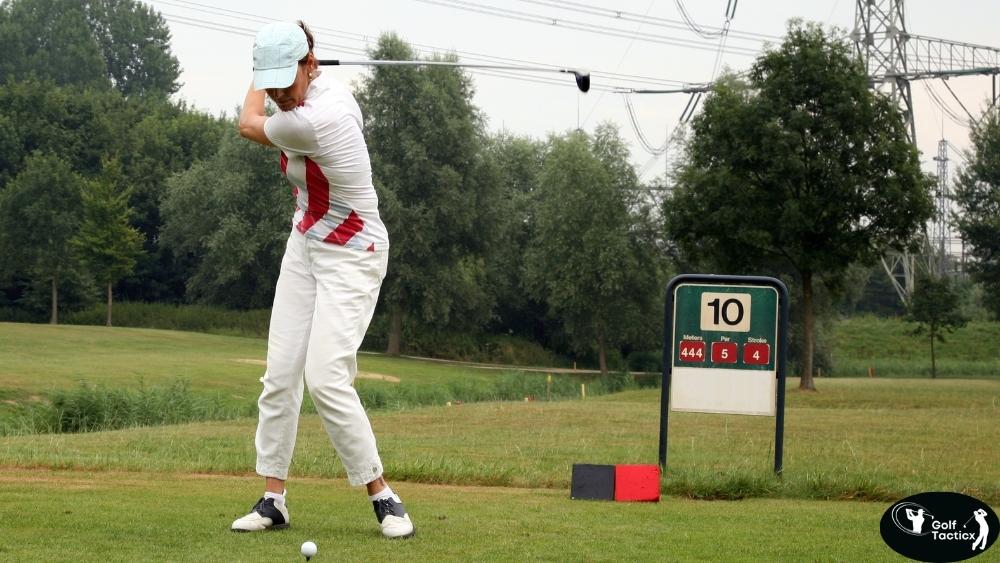In our previous posts, we’ve explored how I adjust my technique for wet or compacted sand? Today, we’re diving into a crucial skill that can make a significant difference in your game.
Golfers of all levels inevitably find themselves in the deep rough at some point. Whether it’s a misjudged drive, an unlucky bounce, or a gust of wind that pushes your ball off the fairway, escaping deep rough without losing control is a skill every golfer needs.
The key to managing these situations is to make strategic choices and execute shots with precision. In this article, we’ll break down the best way to escape deep rough without losing control, covering the right club selection, swing adjustments, and mental approach.
Understanding the Challenge of Deep Rough
Deep rough presents several challenges that make it difficult to execute a clean shot. The thick, tangled grass slows down the clubhead, reduces spin, and can cause the clubface to twist upon impact. Without proper technique, the ball can come out unpredictably, losing both distance and accuracy.
When faced with deep rough, golfers often make the mistake of attempting a heroic shot to reach the green, only to find themselves still struggling to escape. Instead, the best way to escape deep rough without losing control is to make a calculated decision based on the lie, the club, and the intended target.
Assessing the Lie
Before selecting a club or planning your shot, take a close look at the ball’s position. There are three key aspects to consider:
- Ball Depth – Is the ball sitting on top of the grass, buried deep, or somewhere in between?
- Grass Direction – Is the grass growing toward the target, against it, or sideways?
- Firmness of the Ground – Is the ground soft or firm? This affects how the ball will react upon impact.
A ball sitting high in the rough allows for more control, while a ball buried deep requires a more conservative approach. Understanding the lie is essential in determining the best way to escape deep rough without losing control.
Choosing the Right Club
Club selection is crucial when dealing with deep rough. A common mistake is choosing a long iron or a fairway wood in an attempt to maximize distance. However, these clubs are not well-suited for thick grass and can result in a poor strike.
Instead, consider the following:
- Wedges (Sand or Lob Wedge) – Best for deep lies where loft is needed to get the ball up quickly.
- Short Irons (7-9 Iron) – Effective for moderate rough when a controlled, lower shot is possible.
- Hybrid Clubs – Can work well when the ball is sitting up, but should be used with caution in very thick rough.
Ultimately, the best way to escape deep rough without losing control is to prioritize control over distance. Select a club that allows for a clean strike and a predictable ball flight.
Adjusting Your Stance and Swing
Once you’ve chosen the right club, you need to adjust your stance and swing to ensure a clean shot. Here’s how:
Grip the Club Firmly – The thick grass can twist the clubface, so maintaining a firm grip helps stabilize the shot.
Position the Ball Slightly Back – Placing the ball a little behind center in your stance promotes a downward strike, helping the club cut through the grass.
Widen Your Stance – This provides better balance and stability, especially when dealing with uneven lies.
Increase Clubhead Speed – The thick grass creates resistance, so a slightly steeper and more aggressive swing helps power through it.
Follow Through Completely – A full follow-through prevents the club from getting stuck in the rough and allows for a clean exit.
By implementing these adjustments, you’ll improve your chances of making solid contact and executing the best way to escape deep rough without losing control.
Strategic Shot Selection
Rather than always aiming for the green, consider your safest exit strategy. Depending on the lie and surrounding hazards, you may need to:
- Punch the Ball Back into Play – If the rough is too thick, advancing the ball 50 yards to the fairway may be smarter than risking a low-percentage shot.
- Use a Controlled Chip Shot – In some cases, a short, high shot with a wedge is the best way to escape deep rough without losing control.
- Hit a Low Running Shot – If the grass is manageable and you have a clear path, a low punch shot can work well.
The key is to select a shot that prioritizes getting back into position rather than going for unnecessary risks.
Mental Approach: Staying Calm and Focused
Dealing with deep rough can be frustrating, but maintaining a calm and strategic mindset is crucial. Here are some mental tips to keep you composed:
- Accept the Situation – Every golfer finds the rough occasionally. Don’t dwell on the mistake—focus on executing the best possible shot.
- Commit to the Shot – Hesitation or doubt can lead to a poor strike. Trust your decision and swing confidently.
- Practice Patience – Sometimes, the best way to escape deep rough without losing control is to take an extra shot to get into a better position rather than forcing an aggressive play.
Practicing Escaping Deep Rough
To become more comfortable handling deep rough, consider adding rough-specific practice drills to your routine. Some effective drills include:
- Rough Lie Ball Striking – Drop balls into thick rough and practice different club selections.
- Controlled Swings – Work on making compact, controlled swings rather than long, sweeping motions.
- Short Game Drills – Practice chipping and pitching from the rough to improve touch and accuracy.
By incorporating these drills into your practice sessions, you’ll develop confidence in executing the best way to escape deep rough without losing control.
Conclusion
Escaping deep rough is a challenge that requires the right technique, club selection, and mental approach. The best way to escape deep rough without losing control is to assess the lie, choose the appropriate club, adjust your stance and swing, and execute a strategic shot. By prioritizing control over distance and staying composed, you can turn difficult situations into manageable ones.
With regular practice and smart decision-making, you’ll find that escaping deep rough becomes less daunting and more of an opportunity to showcase your golf skills.
In our next post, we’ll cover how to hit a punch shot to escape trees or low obstacles with precision and control. Stay tuned!
















Leave a Reply